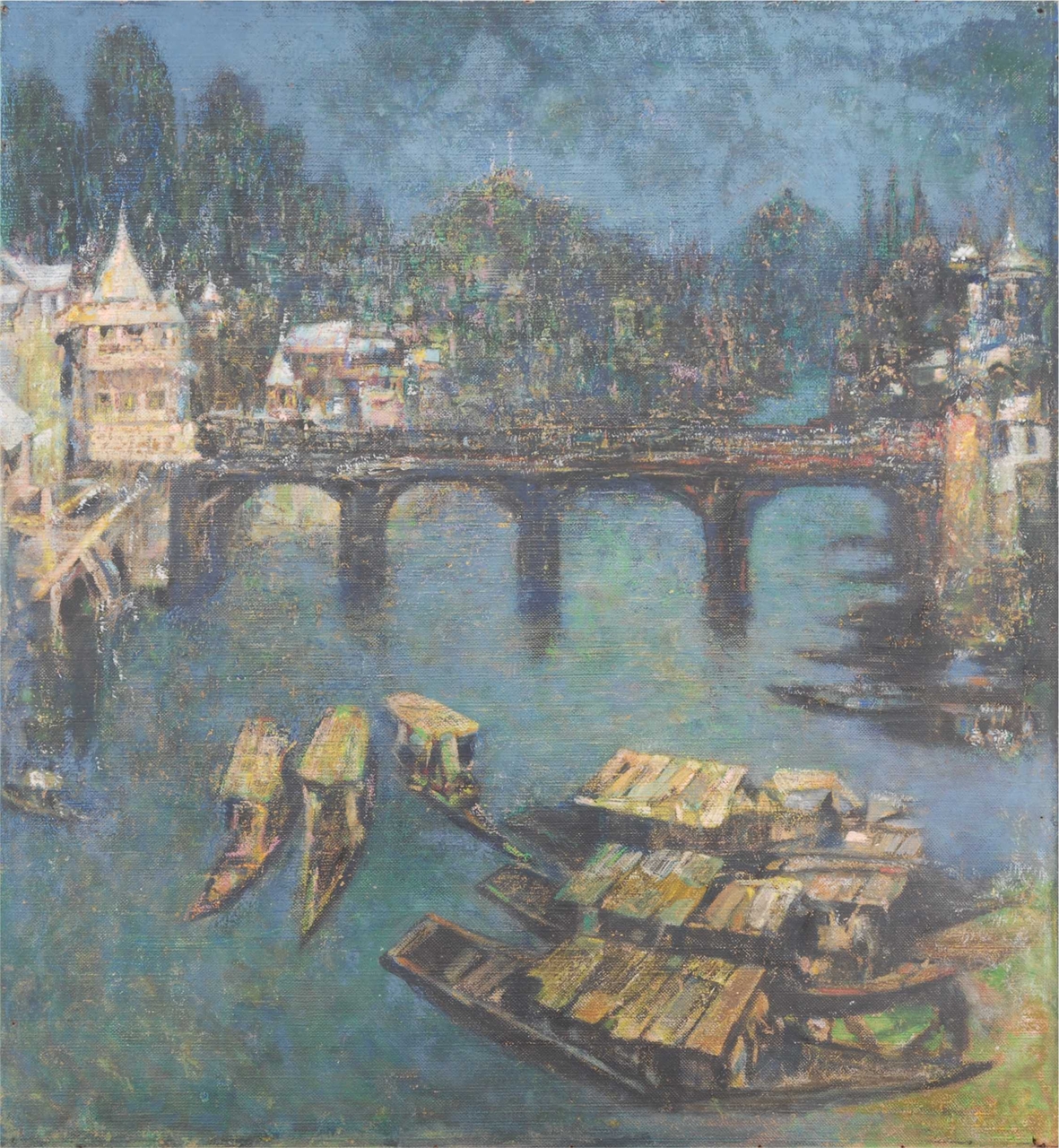![]() Modern & Contemporary Indian Art II
Modern & Contemporary Indian Art II
![]() Modern & Contemporary Indian Art II
DEOKRISHNA JATASHANKAR JOSHI (1911 - 1984)
Modern & Contemporary Indian Art II
DEOKRISHNA JATASHANKAR JOSHI (1911 - 1984)
CONTACT US
Catalogue & Viewing
Lot Closed
Accounts & Shipping
Lot Closed
-
Provenance
 Provenance
Provenance
From the artist's estate
-
Literature
 Literature
Literature

“Deokrishna Joshi is a brilliant draughtsman, with a faculty for chromatic orchestration; he is the artist of Central Indian panorama, of the Malwa country and the Narbada hurtling across the Vindhya ranges past dotted temples and forts and townships. Despite his faithful renderings of the shrines of Maheshwar and fastness of Mandu, Joshi is more than just an illustrative painter; his form seeking mind invests his urgent sense perceptions with structural substance . He catches the fleeting inflexions of air and light, fusing them in vivid patterns; these derive from his environmental colour and gaiety – picturesque women at the well or by the river, a hay cart, boats at anchor or teeming market places” ( 'Modern Indian Paintings', P.R.Ramachandra Rao, 1953)
Towards the mid-twentieth century, art in India was moving away from the ideals of the Bengal school, and the Academic realist style. In the wake of political, social and industrial change, a few artists developed independent aesthetics that incorporated contemporary European artistic movements such as impressionism. The shift was both conceptual and technical, and it is to this lineage of artists that D. J. Joshi belongs. He trained under D.D. Deolikar along with artists like N.S. Bendre, M.F. Husain and Solegaokar at the Chitrakala Mandir in Indore (later Govt. Fine Arts College) and thereafter attended the Sir. J.J. School of Arts, Bombay. He went on to create an individualistic brand of impressionism. His lifelong friend and fellow impressionist painter Bendre said of him “…he would pick up one colour intuitively and go on making different shades so naturally that it would create a rhythm of colours…in this, despite being close to the impressionist school, his work is different from impressionism. And despite playing with colours he never surrenders himself to the colours…” (translated from the 'Shikhar Samman' catalogue)
From 1939-52, he was Founder Principal of the Dhar Arts College, Dhar, and from 1952-67, the Principal of Govt. Fine Arts College, Indore. Through more than five decades as an artist, Joshi exhibited his work in numerous state and national exhibitions and also internationally at the Sao Paolo Biennale, 1965, and the Artist Aid Fund Exhibition, Switzerland. He received many awards, medals and fellowships for his contribution to painting, and in 1981 received the 'Shikhar Samman' the highest artistic honour from the Government of Madhya Pradesh.
Joshi remained devoted to the Maheshwar and Malva region of Madhya Pradesh for the subject matter of his paintings, though he also worked in Rajasthan, Uttar Pradesh, Bombay and Kashmir. Primarily painting landscapes, Joshi was also fond of rural figurative scenes, bazaars and temple towns. His forte was painting water; whether the gushing torrents of the Narmada, or the calm waters of a temple lake. 'The Old Srinagar Bridge' is a beautiful example of his skill at capturing the texture, light, colour and perspective of an aqua-scene.
-
Condition
 Notes
Notes
 Scratch on the painting at the bottom left corner and also slight sratches around the painting. Needs slight restoration.
Scratch on the painting at the bottom left corner and also slight sratches around the painting. Needs slight restoration.
